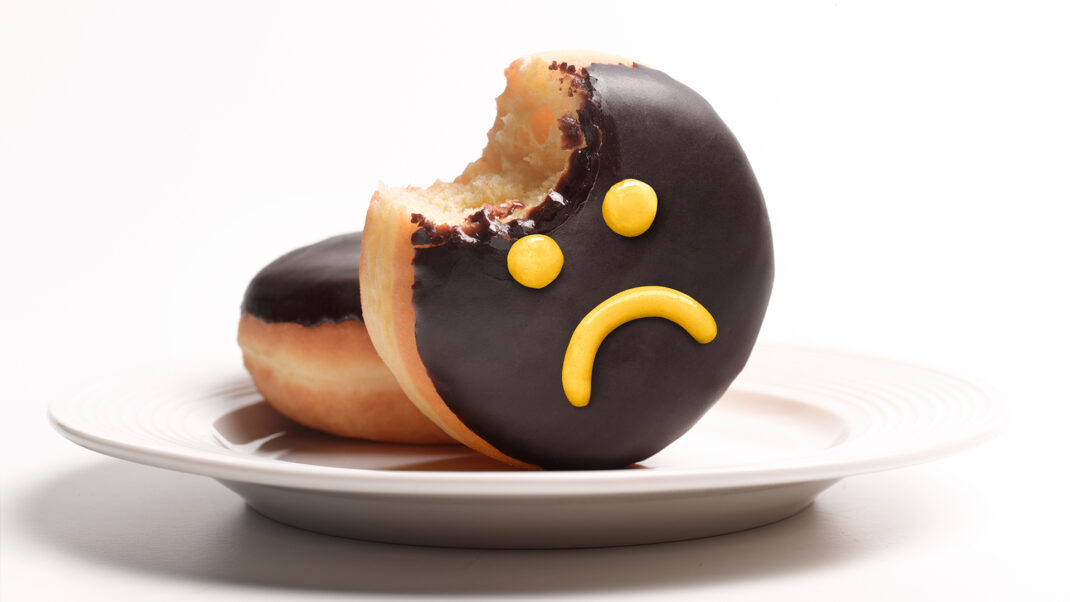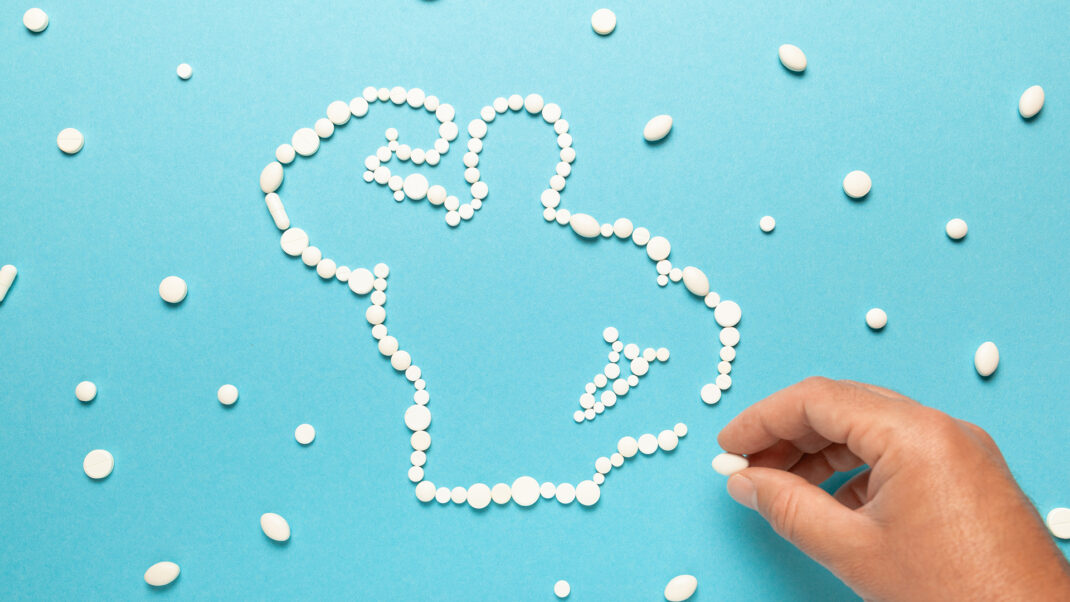Recovery Tech—An Array of New Products, Services and Centers
From cryotherapy to cold lasers, is high tech necessary for effective exercise recovery?

New technologies, products and services are boosting the exercise-recovery business. What’s going on here?
- The rising popularity of wearable devices is making people much more aware of their performance.
- High-intensity interval training remains one of the most popular kinds of exercise.
- Everyday exercisers can now afford treatments that were formerly reserved for pro athletes.
“As people participate in more aggressive training approaches, they experience more postexercise discomfort, and recovery is essential to be ready for that next workout challenge,” says Cedric Bryant, PhD, FACSM, chief science officer for the American Council on Exercise.
And that’s why “recovery centers” with diverse recovery tools and specialized staff are popping up as stand-alone businesses; as sections of full-service fitness facilities; and even as mobile units attending triathlons, marathons and Tough Mudder® events. With so many options, what do fitness professionals need to know about these technologies? How should client questions be handled? Experts share insights on new products and services, the underlying science, and the opportunities and challenges that accompany the growing interest in exercise recovery.
Recovery Tools for Everybody
Many technologies that once were used only by professional athletes are becoming mainstream. Bryant says these tools follow similar scientific premises: promoting blood flow to help remove metabolites, which accelerates healing; and controlling the inflammation from structural damage to muscles and other tissues. Here’s a sampling of popular recovery technologies:
Cryotherapy chambers are either small rooms to be entered completely or large tanks that surround the body but not the neck and head. These chambers are meant to be experienced naked—except for underwear, socks, slippers, ear muffs (if the head is exposed), surgical masks and goggles—at temperatures as low as minus 240 degrees Fahrenheit. A typical session lasts up to 3 minutes. Chambers are showing up in individual businesses in cities like Los Angeles and New York and as part of recovery centers in full-service fitness facilities around the United States.
Cryotherapy operates on the theory that exposure to extremely cold air reduces inflammation. Many professional athletes are already using cryotherapy after workouts to speed recovery.
“Whole-body cryotherapy is a great option for all athletes, from recreational to professional,” says Chris Contini, general manager and recovery specialist at Denver Sports Recovery in Denver. “It’s very safe as long as simple guidelines are followed.”
However, the practice can be risky. A well-publicized case in 2015 involved the death of a young Las Vegas woman, an employee of a cryotherapy business who used the chamber alone after business hours. Colleagues discovered her body the next morning (Ho & Ritter 2015). In another accident, American track athlete Justin Gatlin got frostbite and could not compete in the 2011 World Outdoor Track and Field Championships in Daegu, South Korea (Reynolds 2011). Gatlin’s injury resulted from wearing wet, sweaty socks that immediately froze to his feet inside the chamber (wearing dry clothes is an important precaution).
Moreover, because the science of cryotherapy is still evolving, the protocols for cryotherapy chambers are not firmly supported by scientific evidence. A study published in the European Journal of Physical and Rehabilitation Medicine noted that patients with chronic lower-back pain who were exposed to minus 5 degrees Celsius in a cryotherapy chamber reported pain relief equal to the amount of relief reported by patients exposed to minus 67 C (Nugraha et al. 2015).
Cryotherapy chambers and other new technologies can be a second step for people whose standard recovery methods fall short, says Patrick Jak, coach and director of metabolic testing at Fitness Quest 10 in San Diego. Still, Jak advises referring clients to a physical therapist if they need advanced recovery devices. “These are far more effective when used by professionals who have been thoroughly trained in them,” Jak says.
Cold laser, infrared light, and photobiomodulation therapy are different names for the same procedure—a form of nonthermal light therapy that has been approved by the U.S. Food and Drug Administration for temporary pain relief (ASLMS 2016). Current clinical uses are for relieving pain and inflammation and treating sports injuries. The American Society for Laser Medicine and Surgery says athletic trainers use PBMT to help athletes recover more quickly after injury. Some athletes, like Major League Baseball pitchers, use lasers in their normal warmup routines.
An ASLMS statement notes, however, that the wavelength of light used to penetrate tissue is important and that each condition requires specific treatment parameters. Effective results require a qualified practitioner who knows how to treat a variety of conditions.
A 2016 study by Brazilian researchers from Universidade Nove de Julho in São Paulo found that PBMT enhanced performance and accelerated recovery of elite rugby players in a field test (Pinto et al. 2016). Like other recovery technologies, however, the science is still developing.
“The available science is mixed at this point, partly because adoption of many of these approaches outpaces the science,” Bryant says. “Research continues to emerge, but it’s tough because there are a lot of variables in applying any of these techniques—time, temperature, dose, etc. A lot of it is trial and error.”
Electrical muscle stimulation for recovery places electrodes on the skin; impulses from the electrodes stimulate muscle contractions, which increase blood flow to accelerate metabolite removal and reduce pain. A 2014 review of studies conducted by researchers at the Gatorade Sport Science Institute found that EMS effectively reduced creatine kinase levels (which indicate muscular damage), but more research is required to confirm recovery benefits. Professional units are available at recovery centers, while smaller, more affordable devices like Compex® (www.compexusa.com) are being marketed for home use.
Self-myofascial-release therapy uses rollers, sticks and balls to relieve muscle stiffness and soreness while improving flexibility and range of motion. Studies show that foam rollers can relieve pain from delayed-onset muscle soreness, and these findings are stimulating further research on the role of SMR in exercise recovery (Cheatham et al. 2015; Vigotsky et al. 2015).
“The number-one piece of advice I give to clients is to make sure they are providing themselves with self-administered soft-tissue manipulation, like foam or lacrosse ball rolling and stretching,” says Contini, who works with a mix of recreational athletes, pro athletes and exercise enthusiasts.
Vibration is a key tech feature of rollers like Viper® and balls like Hypersphere®. Experts are divided on the value of vibration. “Adding vibration therapy is nice but not necessary to elicit desirable effects,” says Contini.
Trainer Opportunities: Handling Client Questions
Client interest in recovery technologies creates opportunities to strengthen relationships and to educate. “It’s an ideal time to use effective communication skills,” says Bryant. “Trainers can get so focused on the training session [that] it becomes easy to forget about other aspects of a client’s life. Client questions about high-tech options provide an opportunity to coach people on other lifestyle factors that may be impeding recovery.”
Experts encourage trainers to ask clients why they are interested in recovery technologies. Key components of recovery include the following:
- Rest. In terms of both quantity and quality, is the person getting enough sleep and rest between intense workouts? Is he or she experiencing excessive stress that is interfering with rest?
- Hydration. Are fluids that are lost during workouts being replaced?
- Optimal nutrition and timing. Are energy sources that are depleted by training being replaced with high-quality protein and complex carbohydrates? Is the athlete eating enough nutrients before a session and replenishing those nutrients within 1 hour after the workout?
- Active recovery. Is the exerciser doing some type of low-intensity activity to facilitate recovery?
“If [people are] really experiencing uncomfortable soreness because they’re pushing too hard, it presents an opportunity to evaluate their intensity level,” Bryant says. “A trainer may need to adjust the session to fine-tune the actual workout prescription so it’s more appropriate for individual capabilities and goals, so that [clients] can have a good balance between stress and recovery.”
Jak agrees: “I recommend [that] my clients use myofascial release tools as a first-step recovery approach. These tools build self-awareness and accountability,” he says, because they reinforce that recovery is just as important as the exercise itself, if not more important.
Trainer Responsibilities: Scope of Practice
Experts agree that fitness pros should arm themselves with enough quality information to speak intelligently about high-tech recovery options—what the tools are purported to do and what scientific evidence supports them—but that they should be cautious about how much advice to provide.
“While trainers may provide insight regarding their own experiences with these various strategies, fitness pros should refrain from advising clients on any particular approach where the efficacy is not supported by scientific literature or [offering] an opinion about a tool with which the trainer is unfamiliar,” says Jessica Mathews, MS and 2017 IDEA Fitness Instructor of the Year.
Jak agrees: “We need to keep in mind our scope of practice, our clients, and what and who we want to be for them. Reasonable care and inspiration and steady progression through relevant programming win every time.”
Remain Grounded With an Open Mind
Experts caution against jumping on any high-tech option before trying it personally, discussing options with experts and reading up on available science. At the same time, technology can now provide more of a competitive edge and can enhance comfort. If one of these new tech options does no harm and your client enjoys it, using it can certainly be beneficial.
The recovery market is creating an entirely new segment of fitness to specialize in. Make time to explore, enjoy and educate.
These centers provide training recovery services in the United States:
- Denver Sports Recovery (https://denversportsrecovery.com/), serving Denver
- Edge Athletic Lounge (www.edgeathletelounge.com/home), serving Chicago
- The Rapid Recovery Center (www.recoverspringfield.com/), serving Springfield, Illinois
- RESET Active Recovery Studio (https://urbanathletic.club/reset), serving Washington, D.C.
References
ASLMS (American Society for Laser Medicine and Surgery). 2016. Photobiomodulation. Accessed Dec. 14, 2016: www.aslms.org/for-the-public/treatments-using-lasers-and-energy-based-devices/photobiomodulation.
Cheatham, S.W., et al. 2015. The effects of self-myofascial release using a foam roll or roller massager on joint range of motion, muscle recovery, and performance: A systematic review. International Journal of Sports Physical Therapy, 10 (6), 827–38.
Ho, S., & Ritter, K. 2015. Authorities: Las Vegas cryotherapy spa where employee died had no license. Las Vegas Sun, Oct. 27. Accessed Dec. 14, 2016: http://lasvegassun.com/news/2015/oct/27/authorities-cryotherapy-spa-where-employee-died-ha.
Nugraha, B., et al. 2015. Effects of whole body cryo-chamber therapy on pain in patients with chronic low back pain: A prospective double-blind randomised controlled trial. European Journal of Physical and Rehabilitation Medicine, 51 (2), 143–48.
Pinto, H.D., et al. 2016. Photobiomodulation therapy improves performance and accelerates recovery of high-level rugby players in field test: A randomized, crossover, double-blind, placebo-controlled clinical study. Journal of Strength and Conditioning Research, 30 (12), 3329–38.
Reynolds, G. 2011. Freezing athletes to speed recovery. New York Times, Sept. 7. Accessed Dec. 14, 2016: http://well.blogs.nytimes.com/2011/09/07/freezing-athletes-to-speed-recovery/.
Vigotsky, A.D., et al. 2015. Acute effects of anterior thigh foam rolling on hip angle, knee angle, and rectus femoris length in the modified Thomas test. PeerJ, 3, e1281.
Shirley Eichenberger-Archer, JD, MA
Shirley Archer, JD, MA, is an internationally acknowledged integrative health and mindfulness specialist, best-selling author of 16 fitness and wellness books translated into multiple languages and sold worldwide, award-winning health journalist, contributing editor to Fitness Journal, media spokesperson, and IDEA's 2008 Fitness Instructor of the Year. She's a 25-year industry veteran and former health and fitness educator at the Stanford Prevention Research Center, who has served on multiple industry committees and co-authored trade books and manuals for ACE, ACSM and YMCA of the USA. She has appeared on TV worldwide and was a featured trainer on America's Next Top Model.






